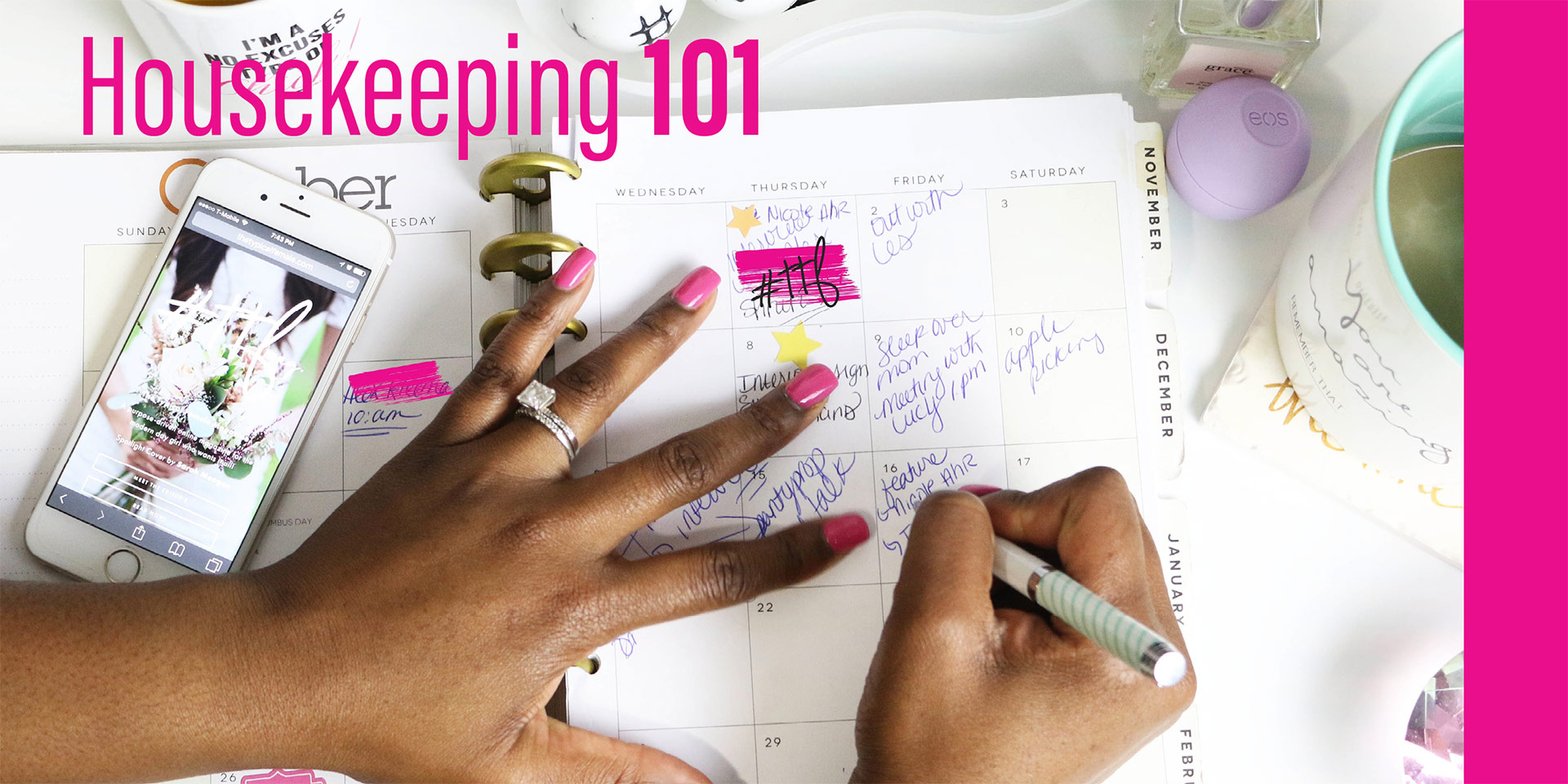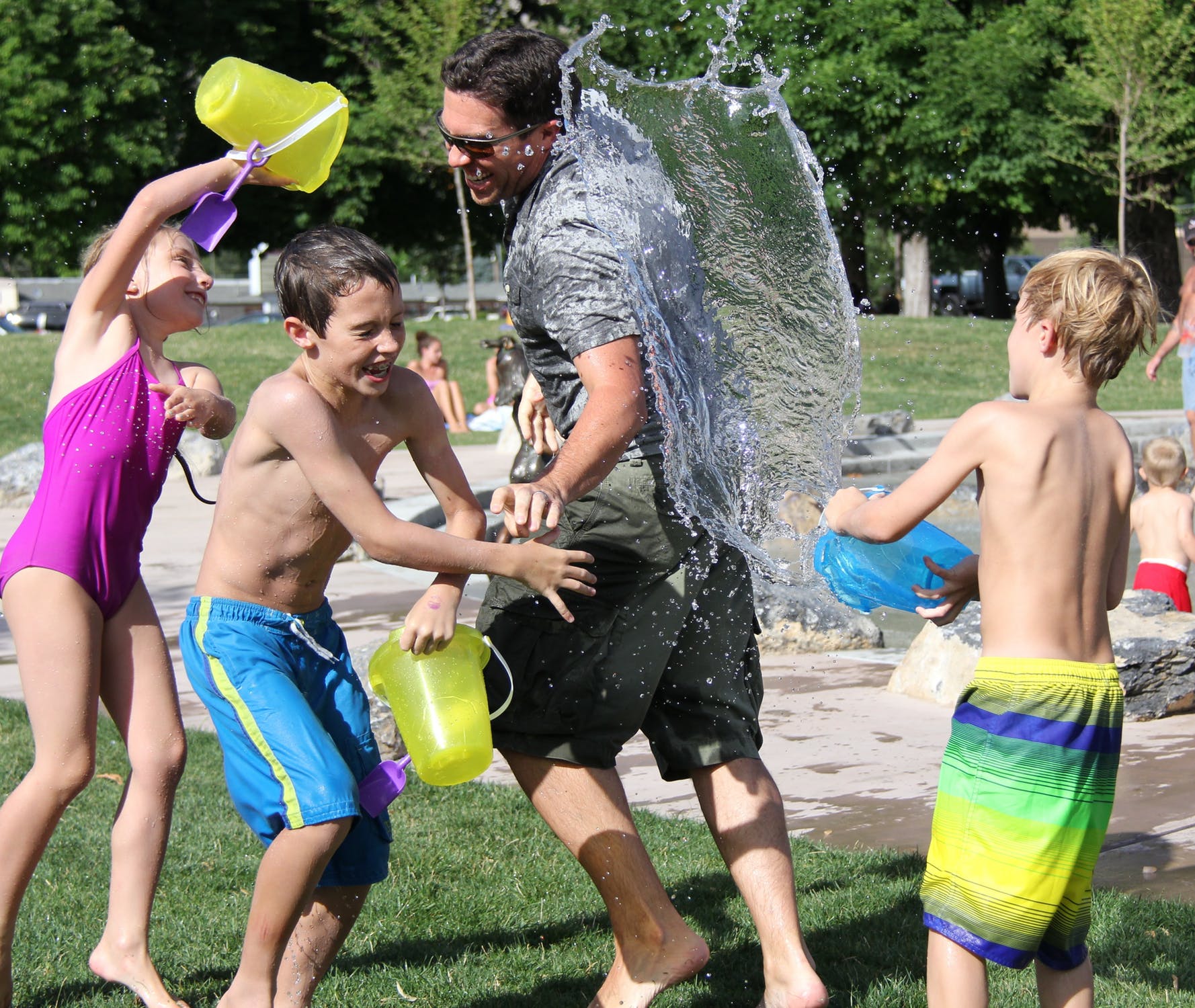Housekeeping

It’s the inevitable, ongoing battle we all fight. I’m talking about the never-ending, sometimes overwhelming struggle against clutter, crud, and family chaos that comes with having kids and just plain living. What parent hasn’t complained about his kitchen counter being covered with papers and other random items? Who hasn’t been frustrated about running behind again because her kid couldn’t find his coat/shoes/fill-in-the-blank? Who hasn’t sighed at the stacks of dishes in the sink, the laundry to be folded, or the state of the bathroom? And the toys—not only are they not put away, but they are everywhere.
I was also drowning in the clutter and chaos. Using tips from world-renowned tidying expert Marie Kondo, Gretchen Rubin (one of my favorite authors on happiness), and local professional organizer Rebecca Dameron of SimpliFine, I worked on my own home and family life. Here are the things I learned.
Entryway
Multiple family members can have a multitude of coats, pairs of shoes, and hats. These items tend to be dropped as they come through the door, and become hard to unearth when trying to retrieve them later—especially when you have a small space. Kondo recommends storing things vertically whenever possible, so hooks on the wall that are easily accessible to everyone are a must. Dameron recommends having kids choose colorful baskets for their shoes—you could even use a small bookshelf to keep them on. Adults can use a shoe rack, so they are able to see exactly what they have to choose from.
Once you have a place for everything, Dameron emphasizes routine as the most important in staying organized. Everyone needs to be sure to put things into their designated space upon entering the house. Coats and hats always go on the hooks, shoes always go in their baskets or on their racks, and book bags and purses go in whatever space you designate for them, whether another hook, a spot on a bench, or even a specific part of the floor. Of course, during the summer, coats and book bags can be packed away, and sandals and cleats can be packed up in the winter to avoid unnecessary clutter.
Kitchen
The first step in organizing a kitchen is to PURGE! Kondo’s plan basically consists of two parts: declutter, then store. Some easy items to go through in the kitchen are:
- Kitchen gadgets. How often do you use the fajita maker or the rice cooker? Often, the tasks these specialized gadgets perform can be done with basic kitchen appliances, or simply pots and pans on the stovetop. If you use a gadget regularly, then keep it, of course; otherwise, donate or sell it in a yard sale or online.
- Multiples. How many ladles or spatulas do you need? What about mixing bowls, storage containers (and all those lids), plastic cups? Pull them all out and get rid of anything that is of poor quality or that you have in excess.
- Cookbooks. You probably have many that are never used. Unless you use most of the recipes in a particular cookbook or it has sentimental value, go through and find recipes you use or would like to try, copy them in some fashion, and then donate the book.
- Manuals. I had a huge stack of these for all of the gadgets and appliances I had. As Kondo pointed out, I never used them. If I got rid of them, the worst that would happen is I would fiddle with the appliance until I figured it out, or look up the manual online. I immediately went over to the stack and threw them all away.
- Food. Throw out anything that is expired, and if there are non-perishables sitting in your pantry not being eaten, give them to someone who will use them.
The goal is for counters to be as clear as possible, says Dameron, though of course things that get daily use should stay out. However, after you get rid of things, you may have more storage space in cabinets for what you decided to keep.
Dameron advises that when storing, you keep things close to where you need them. Be sure to make use of all your vertical storage in cupboards—wire racks inside cupboards add room, giving you the ability to store more without actually stacking everything on top of each other, and eliminating the problem of not being able to get to the things on the bottom. Don’t forget about the insides of cupboard doors-—this is a great place for thin shelves to hold cleaning supplies, spices, aluminum foil, or pot lids.
Toys
Ugh, the toys. Most parents would say that there are just too many toys in general to worry about storage initially. Kids also get overwhelmed when they have too many toys—not only in putting them away, but also in playing with them. Together, decide on some toys your children are willing to part with. Later you can go behind them and pick out a few more that you know they won’t miss or that they have outgrown. If they are popular toys in good condition, you could try selling online or in a yard sale. Sometimes, however, in order to get a little more use out of a toy (and feel a bit less guilt at getting rid of the birthday present from Grandma last year), I will donate it to my kids’ preschool or to the church nursery. That way, not only will my kids still get to play with it, so will many others for years to come—and it will get much more love and use than at my house.
For storage, try to confine toys to your child’s bedroom and/or playroom/living room. My favorite storage solution is cubby shelves with bins—preferably clear ones. Dameron recommends having no lids on the bins, and putting pictures of the toys in the bins on the outside of each, so that finding a certain toy and cleaning up is simple.
Papers
The best thing to do about the endless papers that come home is to take care of them ASAP so they aren’t sitting around in piles, forgotten. Fill out the field trip form, or put the information for the school event in your calendar immediately and toss the paper. Have a system for ‘pending’ papers that can’t be taken care of right away, whether it’s a folder, tray, or tacking papers to a bulletin board. Dameron recommends two versions of the ‘pending’ folder: one where you are waiting on someone else to take care of something, and the other where you must take action. Put dates on the items in this file—either highlighted or with brightly colored Post-Its. Dameron warns that if you don’t label dates and put files where you can easily see them, the ‘pending’ file is likely to just get bigger and/or neglected.
Chores
Once you have decluttered and stored what you have decided to keep, the challenge is to keep the house clean. I have found doing one chore every day is a great way to avoid spending your whole weekend cleaning the house. Weekly chores that have a designated day can include vacuuming, mopping, cleaning bathrooms, and dusting. Children can also help lighten the load by doing age-appropriate chores on their given day. I also try to do a load of laundry a day, so I’m not stuck doing it all at once, with a ton of laundry to fold and put away. Rubin also lives by the ‘ten-minute tidy-up’—she spends just ten minutes cleaning up and tidying at the end of the day to avoid clutter buildup.
Rubin recommends, as a part of finding happiness, to ‘tackle a nagging task.’ If your household clutter or schedule is stressing you out, it’s time to take it on and do a little spring cleaning and decluttering. You’ll feel a lot better about your home when all of the things in it have a their own place.
Family life can be hectic, so keeping a calendar is a must. Most parents now use a smartphone app of some kind, which is helpful because you can sync it with your spouse and teens, leaving no room for confusion about schedules. Sometimes it can be a really good idea to keep a physical calendar too, so younger children who don’t have smart devices can also have access. Dameron recommends color-coding for each family member, either with Post-Its or markers. This makes it easy to tell who is doing what on a given day, and which adult is taking the kids where they need to be.




